Explore Hung Phu Tho Temple - The historical origin of the Vietnamese people
Phu Tho Hung Temple historical relic site is a spiritual destination with special significance in the beliefs of the people of our country. This is the place to worship 18 generations of Hung Kings who built and defended the country. On each New Year's Eve or the March 10th Anniversary of the Lunar Calendar, millions of people will come here to worship, offer incense, and pay tribute to the Ancestors of our nation.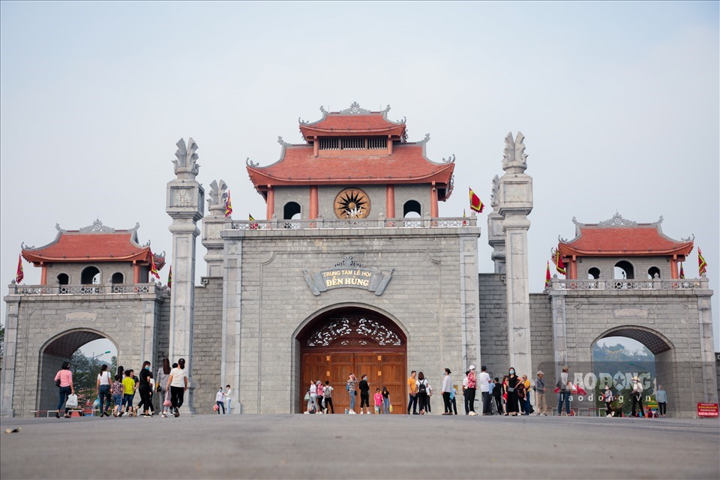
Introduction to Hung Phu Tho Temple - a special national historical relic site
Located on Nghia Linh mountain at an altitude of 175m, Hung Temple is a famous historical and cultural tourist destination in Phu Tho. This place is associated with the origins of the Vietnamese people. According to legend, Hung Temple was built during the reign of King Hung Vuong - the early period of Vietnamese history. The Hung Kings are considered the founders and builders of the Van Lang nation and contributed to unifying the tribes living in this land.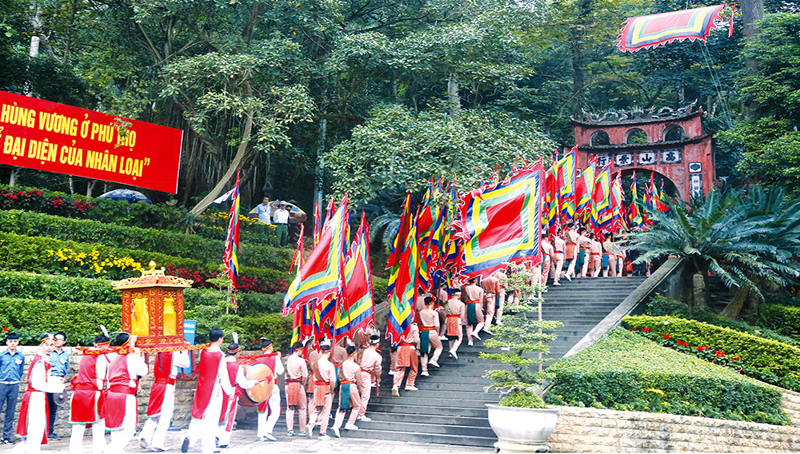 Phu Tho Hung Temple historical relic area has an area of 845 hectares with 4 temples, 1 pagoda and 1 mausoleum. This place has a high, majestic terrain, located in the heart of natural beauty, heaven and earth blend together to create a sacred and majestic space.
Phu Tho Hung Temple historical relic area has an area of 845 hectares with 4 temples, 1 pagoda and 1 mausoleum. This place has a high, majestic terrain, located in the heart of natural beauty, heaven and earth blend together to create a sacred and majestic space.
Today, Hung Phu Tho Temple has become an important historical and cultural relic, attracting many tourists and people to offer incense and visit. Hung Temple Festival is usually held on the 10th day of the third lunar month every year - it is an important occasion for people to gather, participate in religious activities, cultural traditions and remember together the origin of Hung Temple. origin of the Vietnamese people.
With special historical, cultural and scientific value, Hung Temple has been ranked as a special national relic site. It can be said that this place converges the profound spiritual cultural values of our ethnic community throughout history. This is expressed specifically and vividly through the worship of Hung Kings and the Hung Phu Tho Temple festival.
Hung Temple Festival is a major festival in our country of national significance, attracting the attention of every Vietnamese person, whether at home or abroad. In 2012, the worship of Hung Kings was officially recognized by UNESCO as an intangible cultural heritage thanks to its unique and distinct values. This is an important milestone and a great honor not only for the people of Phu Tho but also for the entire nation.
Hung Temple Festival
Hung King's Anniversary - Hung Temple Festival has a very profound meaning to the spiritual life of our people, often held to honor and remember the contributions of the Hung Kings to building and defending the country. At the same time, it also demonstrates the spirit of national solidarity in preserving and preserving good cultural traditions. The worship of Hung King is recognized by the Ministry of Culture, Sports and Tourism of Vietnam as a national intangible cultural heritage.
Places to visit when traveling to Phu Tho Hung Temple
Temple Gate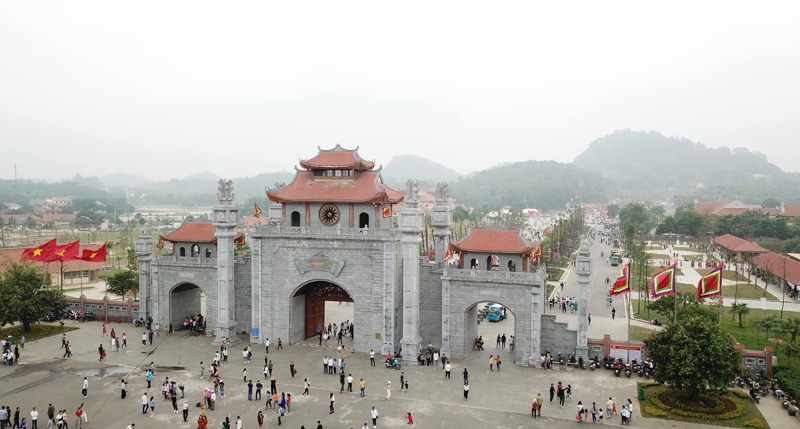 The Temple Gate was built in 1917 and has an 8.5m high arched arch with 2 floors and 8 roofs. The gate is decorated with images of Dragon, Nghe and warrior reliefs. Behind the Temple gate, there are two tigers guarding the god. The Temple Gate is designed with traditional architecture that shows the solemnity and beauty of the historical site. Passing through Hung Temple Gate, visitors enter a sacred space and immerse themselves in the cultural and historical space of the country.
The Temple Gate was built in 1917 and has an 8.5m high arched arch with 2 floors and 8 roofs. The gate is decorated with images of Dragon, Nghe and warrior reliefs. Behind the Temple gate, there are two tigers guarding the god. The Temple Gate is designed with traditional architecture that shows the solemnity and beauty of the historical site. Passing through Hung Temple Gate, visitors enter a sacred space and immerse themselves in the cultural and historical space of the country.
. Ha Temple
From the gate, visitors need to climb 225 steps to reach Ha Temple. According to legend, this is where Au Co's mother gave birth wrapped in a hundred eggs - a legendary story related to the formation of the Vietnamese people.
The architecture of Ha Temple is special because it was built in the "second" style, including two front and back palaces with three compartments in each building about 1.5m apart, creating an elegant and open space. The combination of architectural art and natural environment creates a uniquely attractive scene. 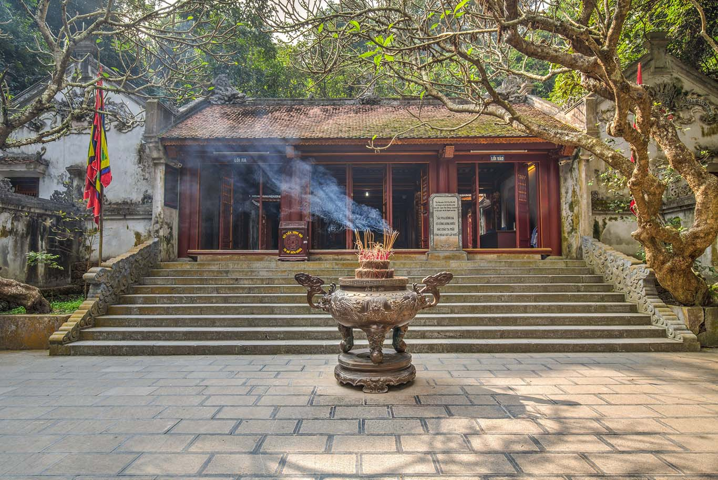 Right at the foot of Ha Temple, visitors can see an important building, the Stele House, designed with a hexagonal shape with six roofs. On the stone stele is engraved the meaningful national language "The Hung Kings have built the country, we must protect the country together" to remind about the responsibility and role of each person in building and developing the country. and protect the country.
Right at the foot of Ha Temple, visitors can see an important building, the Stele House, designed with a hexagonal shape with six roofs. On the stone stele is engraved the meaningful national language "The Hung Kings have built the country, we must protect the country together" to remind about the responsibility and role of each person in building and developing the country. and protect the country.
Trung Temple
Trung Temple, also known as Hung Vuong ancestral temple, is the next destination in the journey to visit the relics of Hung Phu Tho Temple. To get to Trung Temple, visitors need to climb 168 stone steps from Ha Temple. Legend has it that this is where the Hung Kings went on excursions, received foreign gifts, and discussed state affairs, especially where the 6th Hung King passed the throne to Lang Lieu. 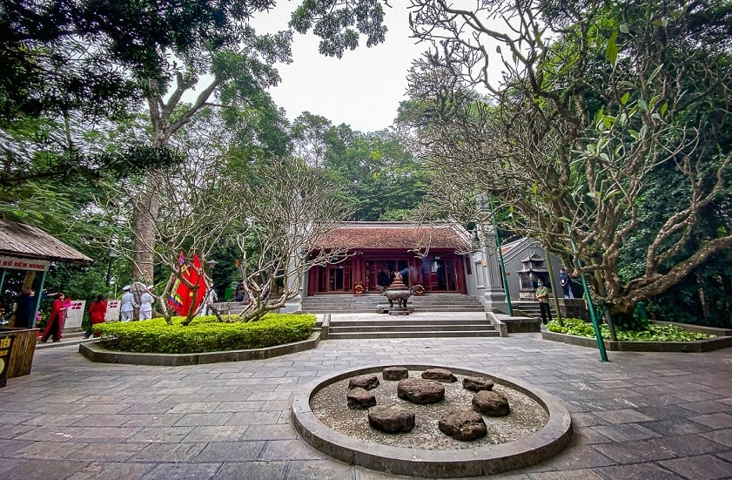 Currently, Trung Temple is a place to worship the Mountain God and commemorate 18 generations of Hung Kings and 8 great kings. This place not only has historical significance but also has unique architectural beauty. The lush green surroundings and quiet space create a sacred and peaceful atmosphere, attracting many tourists to visit and learn about our nation's traditions and cultural heritage.
Currently, Trung Temple is a place to worship the Mountain God and commemorate 18 generations of Hung Kings and 8 great kings. This place not only has historical significance but also has unique architectural beauty. The lush green surroundings and quiet space create a sacred and peaceful atmosphere, attracting many tourists to visit and learn about our nation's traditions and cultural heritage.
Thuong Temple
From Trung Temple, visitors continue 102 stone steps to reach Thuong Temple. This is a temple with architecture in the style of Vuong, divided into 4 levels: the empty bell house, the main worship house, the front altar and the harem. Each level has a structural plan consisting of 3 compartments and 2 rows of columns. 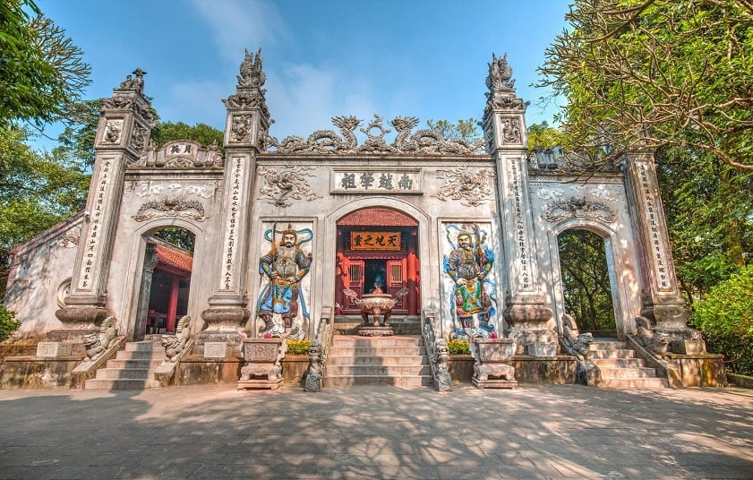 The meticulousness in decorating every detail in the harem of Thuong Temple creates a noble and solemn space. Thuong Temple is where the Hung Kings held sacrifices to heaven and earth, the Mountain God, and the Fire God to show respect and gratitude to the gods and nature.
The meticulousness in decorating every detail in the harem of Thuong Temple creates a noble and solemn space. Thuong Temple is where the Hung Kings held sacrifices to heaven and earth, the Mountain God, and the Fire God to show respect and gratitude to the gods and nature.
Gieng Temple
Gieng Temple, also known as Ngoc Tinh, is a famous architectural work in the Hung Phu Tho Temple relic complex. Gieng Temple was built in the 18th century facing Southeast, outstanding with its public letter architecture. 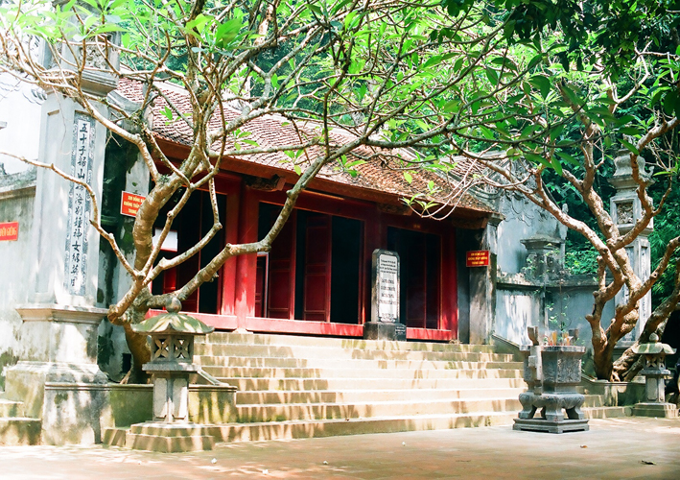 The Gieng Temple project includes a pre-worshiping house with 3 compartments, a harem with 3 compartments, a mallet handle and 2 oan houses, a total of 4 compartments. In particular, Gieng Temple is very famous for its four seasons full of water and always clear.
The Gieng Temple project includes a pre-worshiping house with 3 compartments, a harem with 3 compartments, a mallet handle and 2 oan houses, a total of 4 compartments. In particular, Gieng Temple is very famous for its four seasons full of water and always clear.
Au Co Mother Goddess Temple
Au Co Mother Temple is located on Oc Son Mountain (Van Mountain), built in 2001 and inaugurated in 2004. Au Co Mother Temple is located in the Hung Temple complex, worshiping and remembering Mother Au Co. The architecture of Au Co Mau Temple is built in the shape of the letter Dinh, facing southwest. 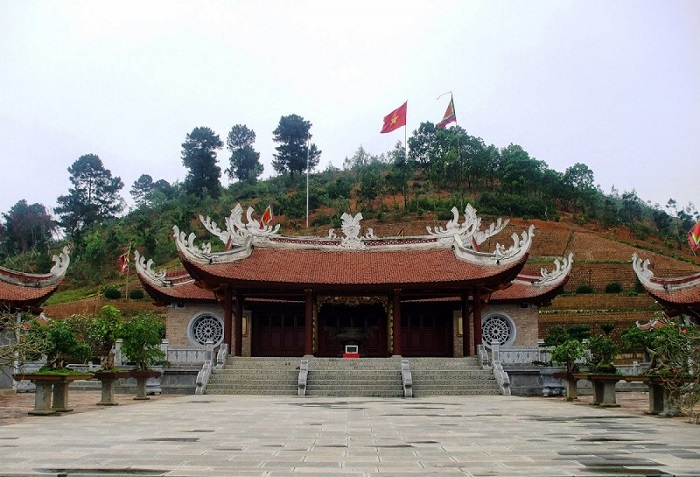 The building is meticulously cared for with columns, diaphragms, beams and dui made from ironwood, a tiled roof and brick walls. The Temple's grounds are very large, airy, and quiet for tourists to visit. The temple is located on a mountain with views of the surrounding beautiful natural scenery.
The building is meticulously cared for with columns, diaphragms, beams and dui made from ironwood, a tiled roof and brick walls. The Temple's grounds are very large, airy, and quiet for tourists to visit. The temple is located on a mountain with views of the surrounding beautiful natural scenery.
Lac Long Quan Temple
Lac Long Quan Temple is a religious building built in 2007 and inaugurated in 2009. The temple is located on Sim hill, an important destination in the Hung Temple complex. Lac Long Quan Temple is shaped like a large turtle, both sides are decorated with statues of Thanh Dragon and White Tiger. 
The whole temple includes the main temple, gate, symbolic pillars, symbolic gate, stele house and other auxiliary works. The main temple has an area of about 210m2, built in the shape of the letter Dinh with ironwood furniture, painted in gold, the roof is covered with funny-shaped tiles, Bat Trang brick floor with green stone seams removed.
Hung Vuong Museum
Located in the Hung Temple complex, Hung Vuong Museum was built to preserve and display artifacts and documents about the culture, history, traditions of our people, about the Hung Kings and their contributions. their contributions in building and protecting the country.
Hung Vuong Museum has spacious space with modern design and beautiful decoration. Coming here, visitors can explore and learn about the culture, life, and beliefs of our people from prehistoric times to modern times. The artifacts are displayed scientifically and arranged according to historical periods to help visitors have an overview of the development and developments in each period.






























